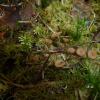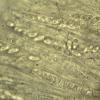
29-06-2015 14:29
Marja PennanenHi,once again I'm missing even the genus for my co

30-06-2015 16:38
 Blasco Rafael
Blasco Rafael
Hola tengo esta muestra sobre estiercol de vaca, y

28-06-2015 19:25
Hi again Chris Perhaps you have this other ? Tra

30-06-2015 19:07
Salvador TelloEstoy intentando identificar un hongo de este gén

01-07-2015 09:53
 Nicolas VAN VOOREN
Nicolas VAN VOOREN
Bonjour.Je cherche quelqu'un qui aurait accès à

29-06-2015 22:29
 Bernard CLESSE
Bernard CLESSE
Sur la berge argileuse d'un ruisseau.a) poils à b

29-06-2015 01:05
 Andreas Gminder
Andreas Gminder
Hello, again a small ascomycete from boggy heathl

28-06-2015 11:34
Marja PennanenHi,I accidently noticed some Moellerodiscuses grow

28-06-2015 18:25
Hi to everybody Could anyone help me with the ori

In the area of Telemark (southern Norway), at the touristic point of the Ravensjuv, we collected a Sclerotiniaceae on dead stems of Rubus chamaemorus (at least this was the only plant that could be regarded a possible substrate in the vicinity). So - I asked ant G and so I found the paper of Holst-Jensen & Schumacher. And - what a luck - there was a species that seems to fit perfectly: the spores with the two quite large polar drops as contents that also have the right size, the habit and the substrate, the excipulum of globulosa. Everything o.k. - But: I did the IKI-reaction and obtained deeply blue pori. Holst-Jensen & Schumacher, however, describe the pori as iodine-negative.
Who knows C. latipes and also has obtained blue pori?
Regards from Lothar

never saw this interesting species or photos of it. In only know Nina's pretty photos of Rutatroemia cf. chamaemori, which has much longer curved spores like R. echinophila. But typical R. chamaemori has spores similar as yours, though longer.
I assume you checked the excipulum of globulosa? Did you measure more spores?
There is a further mismatch in the protologue: How can a species be named latipes when it could better be called filipes or the like? I guess the stipe is max. 0.5 mm wide, not 0.7-2 mm. There must be some confusion, or?
Lothar, falls du eine pdf hast dann schicke mir sie doch (hab nur eine Papierkopei). Falls du Holm & Holm 1977 fungi on Rubus chamaemorus nicht hast, den schicke ich dir gerne.
Seid ihr wohl schon wieder zurück?
Zotto

Hi Zotto,
yes, the excipulum is globulosa, the asci have croziers. I did not measure more spores by now, but can do this still with my fotos.
Den Aufsatz habe ich mir im Internet herunter geladen (Research Gate), aber das Speichern funktioniert nicht richtig (Text ist dann verzerrt und unlesbar). So kann ich Dir das leider nicht zusenden, aber Du solltest es selbst ergoogeln können.
Holm & Holm habe ich nicht - würde ich gerne haben ;-)
Yes, we returned Monday. There were not many fungi growing - it was still early spring in Scandinavia! (most common fungus was Gyromitra esculenta).
Kind regards and thanks!
Lothar




